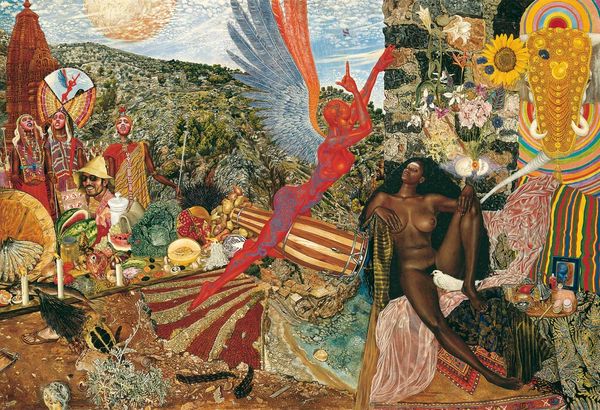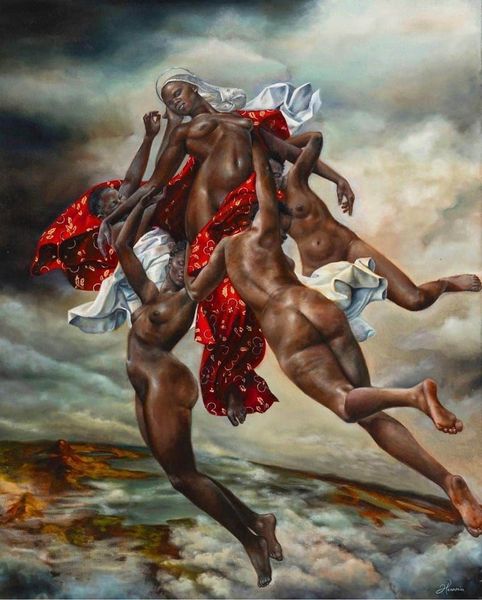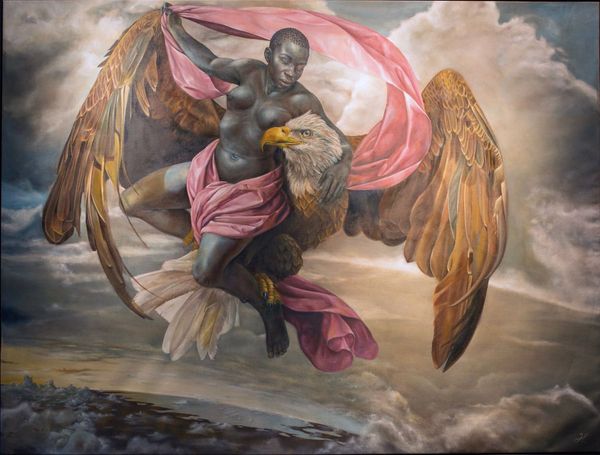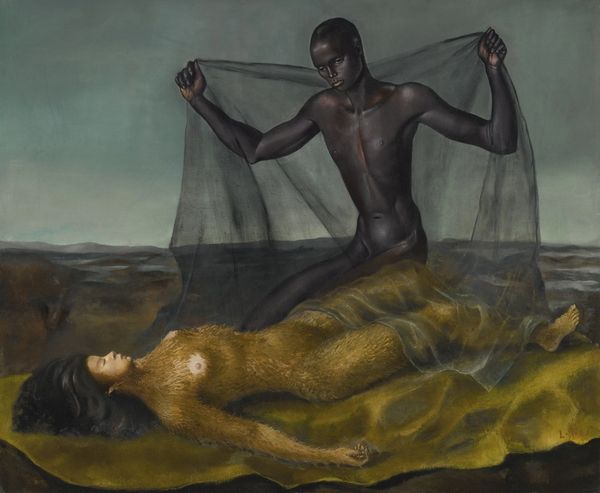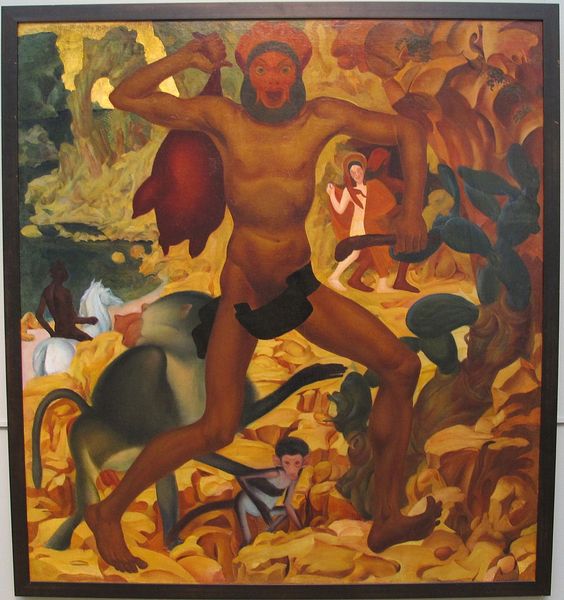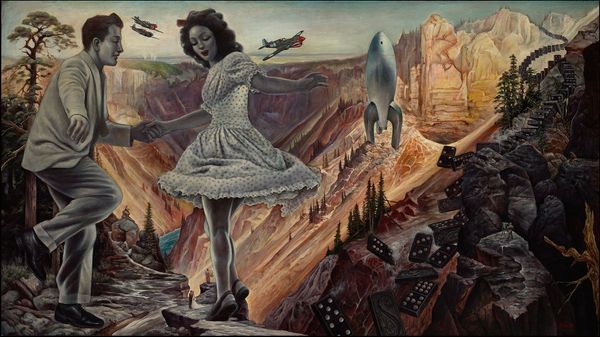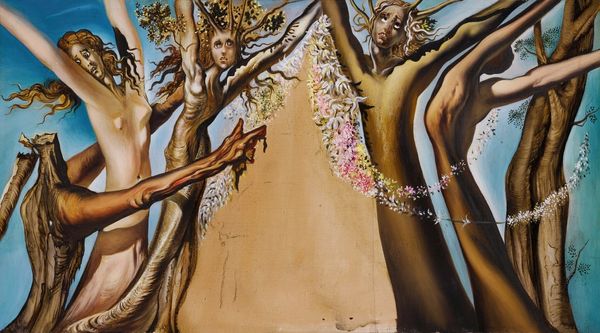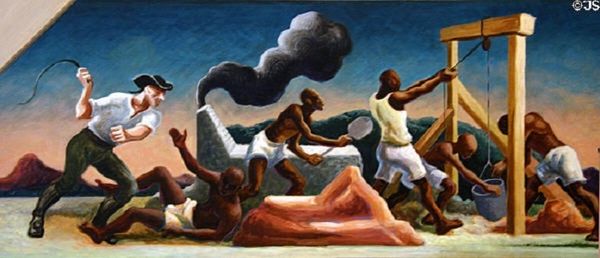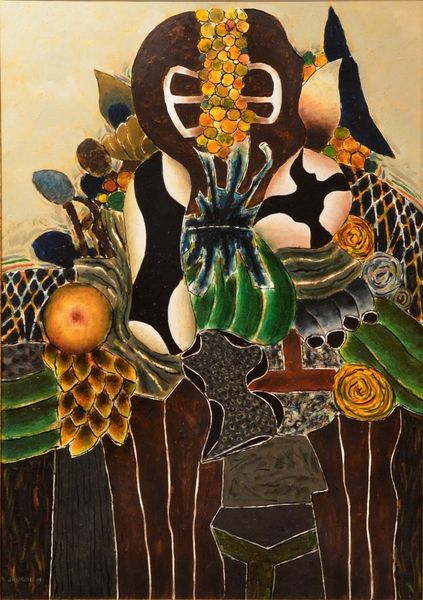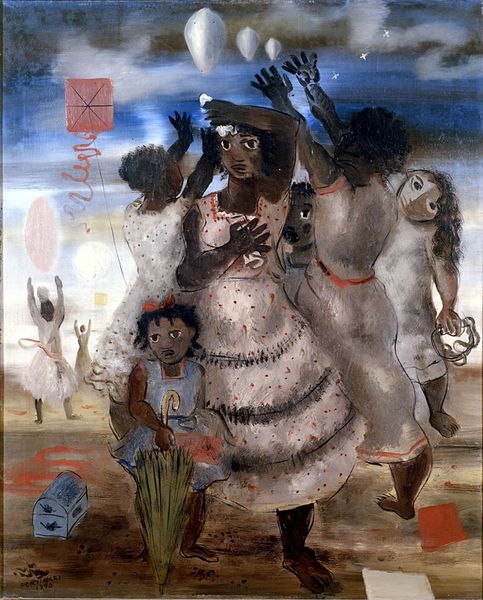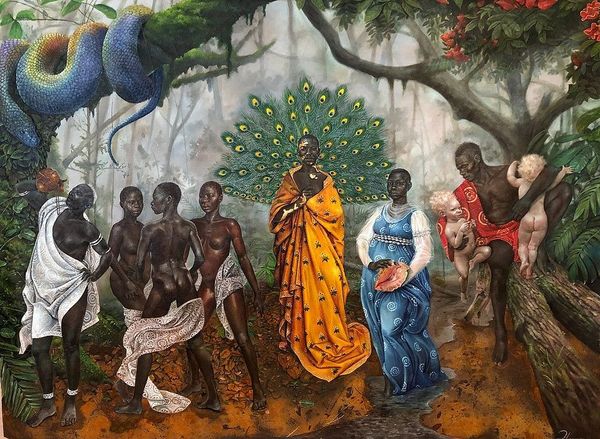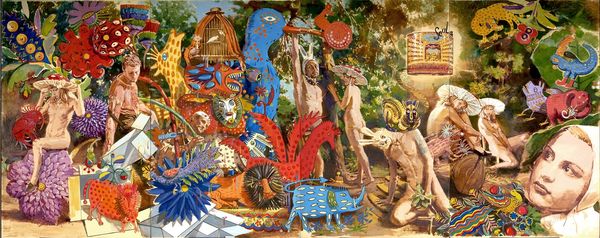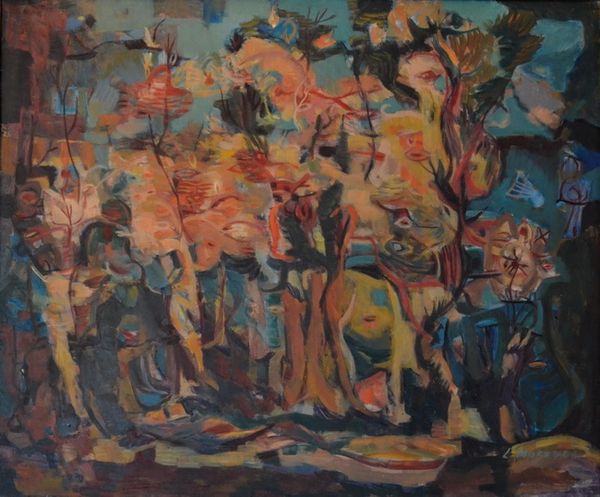
painting, oil-paint
#
african-art
#
contemporary
#
allegory
#
painting
#
oil-paint
#
appropriation
#
figuration
#
oil painting
#
naive art
#
history-painting
#
nude
Copyright: Harmonia Rosales,Fair Use
Editor: This oil painting is Harmonia Rosales's "Birth of Oshun," created in 2017. I'm immediately struck by its resemblance to Botticelli's "Birth of Venus," but with Black figures. What do you make of Rosales reimagining this iconic scene? Curator: Rosales directly challenges the Eurocentric ideals that have historically dominated art. By appropriating "The Birth of Venus," she interrogates the exclusion of Black bodies from classical narratives. Consider how the original painting, commissioned by the Medici family, reinforced their power and status. Rosales disrupts this legacy by placing Oshun, the Yoruba goddess of love, beauty, and fertility, at the center. Editor: So, it’s not just about representation, but also about questioning the power structures behind art history? Curator: Precisely. The peacock feathers held by the Zephyr figures, for instance, aren’t merely decorative. Peacocks symbolize beauty and pride, yet their appropriation often carries a colonial weight. What happens when we view them here? Rosales prompts us to rethink the established canon, its inherent biases, and its continuing impact on cultural perception. Editor: I never thought about it that way. It really makes you think about who gets to be represented, and why. Curator: Rosales highlights that museums and galleries play a significant role in shaping cultural understanding. By exhibiting works like "Birth of Oshun," these institutions are participating in a crucial dialogue about inclusivity and representation. Do you think simply replacing white figures with Black figures is enough, or does it demand a more radical shift? Editor: I think it's a powerful start that opens up more avenues to explore. Curator: Agreed. It’s a conversation starter that has the potential to disrupt ingrained ideas of beauty and cultural importance. Editor: I'm definitely leaving with a new perspective on how art reflects and shapes society. Curator: Indeed, and how artists like Rosales are using that very dynamic to drive meaningful change.
Comments
No comments
Be the first to comment and join the conversation on the ultimate creative platform.
